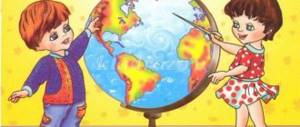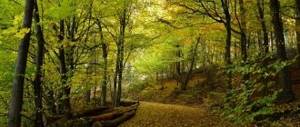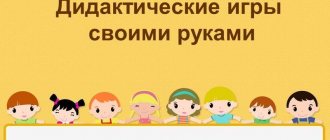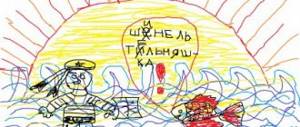Complete the exhibition with books that fit the theme. Write down their names and authors.
I would supplement the exhibition “About Our Little Brothers” with works about the life of animals, such as:
1) “Stories about the life of animals” by Boris Zhitkov;
2) the story “My Animals” by trainer Vladimir Durov;
3) stories “Who Sings Like” by Vitaly Bianchi;
4) the collection “Forest Voice” by Georgy Skrebitsky;
5) Chukovsky’s poem “Hedgehogs Laugh.”
Literary reading
Let's get to know each other:
- with works by N. Sladkov, E. Charushin, M. Prishvin, B. Zhitkov, which reveal the magical world of nature.
We will learn:
- compare artistic and scientific texts, fairy tales and stories about animals;
- determine the sequence of events, draw up a plan and retell the work in detail according to this plan.
We will learn:
- see the beauty of nature;
- identify the heroes of the work, talk about them, express your attitude towards them.
N. Sladkov
Come up with a story about the adventures of a little chick or animal. Start your story like this:
One day, a mother hen, walking along the shore of a small shallow pond, saw a yellow, defenseless duckling in the coastal reeds.
He was lost and very scared.
The chicken ran up to him and asked why he was walking alone.
The duckling said that during a morning walk with his family, he got lost from them and lost track.
The duckling tried to find the house, but got even more lost.
The kind hen took the duckling to her chicken coop.
She told her children about the misfortune that happened to their little guest.
The chickens began to feel sorry for the duckling and consoled him that his mother would definitely be found.
In a few days, the duckling became like family to the chicken family.
The little chickens loved their new brother so much that they didn’t even want him to go to his own home.
But the chicken understood that somewhere the duckling’s mother was worried and she was obliged to help find the baby’s family.
Therefore, one evening the hen and duckling went in search of their own mother.
They walked and fornicated for a long time, and then the duckling saw a house in the distance that was very similar to the owner’s.
They went to him, went into the yard, and there a duck was sitting with her ducklings and they were all crying together.
- Mom, don't cry! - said the duckling.
The duck raised its head, ran up to its child and hugged it tightly.
The duckling's brothers and sisters quickly ran up and also began to cuddle up to him and be glad that he was found.
It turns out that they had already searched him everywhere and were very afraid that something had happened to him.
The duck thanked the chicken for saving and sheltering her child and also helping her find a home.
Since that time, the duckling has become more attentive and no longer lags behind on walks.
He and his family constantly go to visit their second family – the chicken family.
Now ducklings and chicks are real friends!
___
Take the book by G.-H. from the library. Andersen's "The Ugly Duckling". Read it.
Is this fairytale story similar to the one you came up with yourself? Enter the comparison data into a table
Reader's diary "The Ugly Duckling"
Prove that M. Prishvin’s work “Guys and Ducklings” is a story.
Reader's diary based on the story “Guys and Ducklings”
Mikhail Prishvin's work "Guys and Ducklings" is a story, not a poem, because it does not use rhyme and rhythm, but prose.
The story is based on one event, namely the children’s pampering with ducklings.
The work contains negative characters (guys) and positive characters (author, duck and ducklings).
Heroes perform different actions, have different characters and act differently.
At the end of the work, the negative heroes - the guys - become positive, having done a good deed, as they release ducklings and understand their guilt.
Quiz “About our little brothers”
1. The largest mammal on Earth? (Whale. Its length is 33 m, and its weight is 150 tons).
2. The smallest mammal (Shrew, her
weight about 2 g).
3. What do you know about the vegetarian bear? (Panda or bamboo bear, feeds exclusively on shoots
bamboo).
4. What animal is found only in Russia? (Sable).
5. Which sea animal has 3 hearts and blue blood? (In an octopus).
"Fish"
1. Which sea fish is shaped like a chess piece? (Sea Horse.).
2.
This luminous small fish can be found in the rivers of the Amazon, in your own aquarium, and even in the periodic table.
Call it (Neon).
3. This fish is the largest predator in the rivers of our country (Som).
4. For residents of Thailand, their battle is no less exciting than bullfighting in Spain (Siamese cockerels).
5. This is the name of both an aquarium fish and an astronomical instrument (Telescope).
6. In Poland and the Czech Republic this fish is called sprat, and in the same way as in Estonia (Kilka).
7. This Black Sea shark does not pose any threat to vacationers (Katran).
8. It was this fish that was successfully used to fight malaria (Gambusia).
9. This small predatory fish builds a nest in the water, caring for its offspring (Stickleback).
10. Males of this fish carry eggs in a pouch on their belly (Seahorse).
11. The largest fish of the Don (Beluga).
12. The smallest fish of the Don (Goby).
13. The fish that lays the largest number of eggs (Luna fish, 300 million eggs).
14. Where does the river eel lay its eggs? (In the Sargasso Sea of the Atlantic Ocean).
15. Which commercial fish are considered domesticated? (Mirror carp).
16. Do all fish lay eggs? (No. There are viviparous animals, for example, guppies).
LESSON - TEST CROSSWORD
Goal: Consolidation of acquired knowledge in a playful way. Methodology:
Students receive a card (2.5 x 3.5 cm, having 5-7 lines). They are numbered horizontally, like in a regular crossword, and the questions are written at the bottom.
Within a certain time (usually 20-30 seconds are given for one question), the student fills out a card - solves the crossword puzzle, writing the answers in the boxes, and puts his last name on the back. If the work is done correctly, then the “test” (for the teacher) word is read in the last column.
A LESSON IN THE FORM OF A LOTTO GAME.
It is advisable to play Lotto on program topics that contain a significant amount of material.
Goal: Students work with program topics containing a significant amount of material.
During the classes:
Students are first informed of the topic and date of the lesson, the general focus of the questions raised, the methodology for organizing the lesson and the assessment of the work.
Students receive task cards; The cards, differentiated by the complexity of the work, have serial numbers. Within 10-15 minutes, students are asked to prepare answers to questions or assignments on sheets of paper.
Lotto game: in random order, the teacher takes out small squares with numbers from the envelope and announces the number. The student who has a task card with the same number gives the answer.
Basic Rules:
— pauses should not be allowed so as not to encourage students’ inattention and not to slow down the pace of the game;
- only the read entry on the piece of paper is evaluated, and not the number of “numbers” given to the student during the lesson;
- the answer must be written briefly and clearly, so that the content of the question is extremely clear; •sometimes the student is asked to read the question itself;
- if the answer is complete and correct, then the “number” is given to its “owner” and he attaches it with a paper clip to his card;
- if clarification or addition is necessary, then those who wish to do so are invited to do so, expressing their intention by raising their hands; In this case, the number is given to the one who gave the best answer; if such an answer was not given, then the teacher keeps the number.
SUMMARY LOTTO LESSONS IN BIOLOGY
To play the game, students are asked to draw a rectangular playing field (drawing) in their notebooks - 2 cells vertically and 3 horizontally.
The optimal size of each cell is 9 notebook cells in length and 4 in width.
Each student is given a card with terms that he must write in the cells of his playing field (you can display three options filled in on the board
cards).
To fill the playing field, students are given multi-colored circles of appropriate sizes, cut out of paper. When asking a question, the teacher stipulates which color circle should cover the answer to it. With the proposed sequence of questions, if filled out correctly, the rows or columns of the tables should be closed by circles of the same color - this greatly facilitates the check.
During the game, the teacher takes pre-prepared cards from the envelope and reads the questions written on them twice, and the student, having found the answer in his tables, closes it with a circle. If all cards are filled out correctly, the student is given a grade of “5”. If one answer is incorrect - “4”. Other ratings are not given (you don’t have to give a “4”).
Lotto on the theme “Escapes”
Three card options are used.
The questions are arranged in such an order that the first column is filled with circles of one color, the second with another, and the third with a third color.
Answer terms on the playing fields:
I'm a card.
| Next | Generative | Mesh |
| Cone of growth | Whorled | Simple |
2nd card
| Difficult | Leaf axil | Opposite |
| Kidney scales | Vegetative | Dugovoe |
3rd card
| Leaf scar | Insertable | Knot |
| Apical | internode | Parallel |
Questions:
Each successive pair of questions suggests the use of circles of the same color.
1. What is the location of the kidneys one after the other called? (Next).
2. What is the name of the very tip of the kidney with educational tissue? {Growth cone).
3. What is the name of a large round bud with flower buds? (Generative).
4. What is the arrangement of leaves of three or more in one place called? (Whorled).
5. What is the name for venation with multiple branching veins? (Mesh).
6. What are leaves with one leaf blade and petiole called? (Simple).
7. What is the name of a leaf consisting of several leaf blades and having a common petiole? (Difficult).
8. What protects the kidneys from adverse conditions? (Kidney scales).
9. What is the name of the angle between the leaf petiole and the stem? (Leaf axil).
10. What is the name of a bud that has only leaf buds? (Vegetative).
11. What is the location of the kidneys one against the other called? (Opposite).
12. What is venation in the form of arcs called? (Arc).
13. What is the name of the trace left by a leaf? (Leaf scar).
14. What is the name of the bud located at the end of the branch? (Apical).
15. What is the growth of internodes in a plant called?
(Insert).
16. What is the distance between nodes on a stem called? (Internode).
17. What is the name of the place on the stem where leaves and buds develop? (Knot).
18. What is the name for venation, in which long veins are located side by side on the leaf blade? (Parallel).
LESSON – “DOMINO”
Almost all students are lazy to memorize formulas. It is necessary to remember them. The game Dominoes allows you to do this.
One formula can be associated with up to 10 correct formulations, or vice versa: one formulation corresponds to several formulas. 10-20 minutes of playing such “dominoes” is enough to firmly memorize many formulas.
LESSON COMPETITION
They can be different in content, organization and structure. Most often they are carried out with the aim of repeating or generalizing the material studied.
Kinds; duel, fight, relay race, competition, etc.
Goal: Fostering individual and collective responsibility for work results.
Forming in students the ability to correlate their interests with the interests of the team, subordinate their emotions to solving a specific problem, use all their capabilities, and navigate non-standard situations.
Any lesson of this type includes 3 main stages:
- preparatory,
- gaming,
- summarizing. Preparatory stage. Formation of teams. Jury determination.
Selection of tasks, equipment for preparing experimental tasks and materials for short reports.
Main part.
The jury member makes the first announcement.
Warm-up (teams solving problems, explaining experience).
Captains' competition (solving experimental problems).
The jury member makes a second message. Team competition: independent, “time-based” problem solving.
Summarizing
and announcement of results.
Option 1.
The goal is to consolidate the skills to solve problems of different types in the subject.





